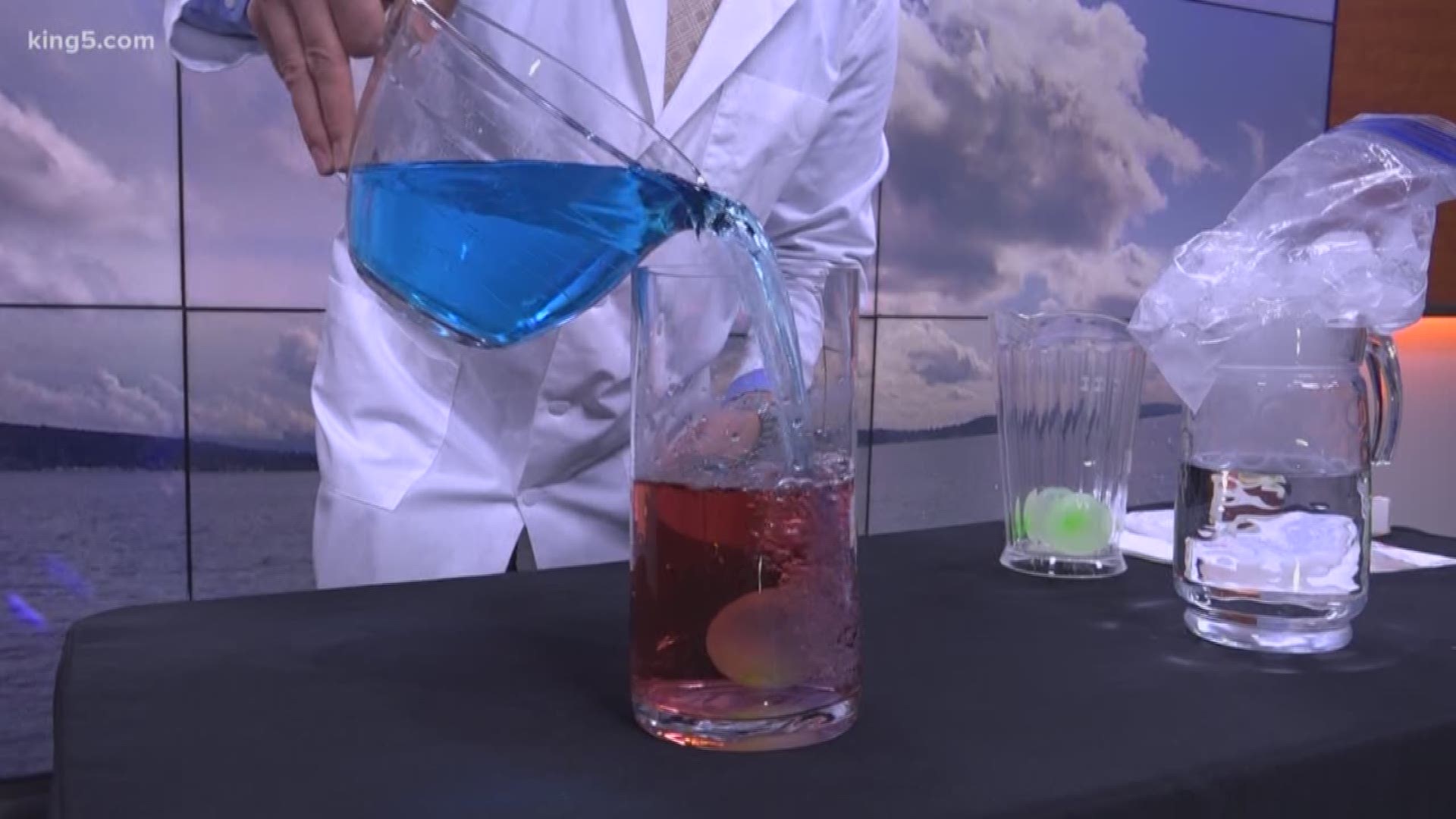Today we are demonstrating how buoyancy works in the atmosphere.
Air is a fluid, like water. Because they're both fluids, they behave similarly.
In this demonstration, we use water of different temperature to show how an air parcel (just a chunk of air) can become buoyant given the right conditions.
First, lets label a couple things. Water in the jar represents the atmosphere. The water balloon represents a parcel of air (just any piece of air).
In the first part of the demo, we have a stable environment where the water is warmer than lukewarm. When we put a lukewarm water balloon into the environment, our parcel sinks to the bottom of the jar. This is what happens in the atmosphere when high pressure is present. Our parcel is cooler than its surroundings which allows the balloon to sink, and we have negative buoyancy.
We change the buoyancy of our jar atmosphere by adding cold water. When we do that, our parcel (water balloon) is now warmer than its surroundings, and is forced to rise. This happens in the atmosphere when a trough of low pressure moves overhead (cooler temperatures aloft). Thunderstorms are generated from this unstable environment. This same mechanism is at work keeping a hot air balloon in the sky. The balloon is warmer than its surroundings, and stays aloft.

